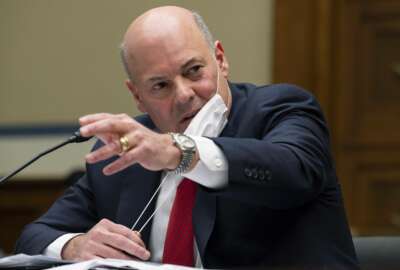

USPS loses $10 billion a year. Nothing's changed in years, Congress hasn't acted. Maybe they should listen to DeJoy?
Supposed you wanted to take your vaccinated self for a stylish visit to Anchorage. The round trip airfare would set you back about $2,500.
To mail to Alaska a letter you wrote on vellum in blue-black ink with your fountain pen? That would cost 55 cents, the current price of a first class stamp.
Now the Postal Service proposes loosening the delivery standards for first-class mail — the letter on which you spent 55 cents in postage might take two or three days to get there. And to hear some of the reaction in Congress, you’d think USPS was proposing a return to the Pony Express.
Go head, then, have FedEx send your letter overnight. That’ll cost you $18, or 32 times the cost of the stamp.
The slower first class delivery is just one of many proposals in a 10-year plan Postmaster General Louis DeJoy offered yesterday. And that’s the problem: DeJoy is a holdover from the Trump administration. In the civil war that is Congress, and its camp of followers, that makes anything he says produce a “fuhgettaboutit” autonomic response from half the town.
I’m not saying DeJoy is right or wrong, just that the plan deserves to be heard and examined and not dismissed out of hand.
USPS’ environment is shifting fast. It needs to get more competitive in package delivery, for which the 10-year plan proposes an improvement of standards. It needs to replace its ancient trucks with a more efficient and safe fleet. It needs to overhaul its infrastructure. And above all it needs to reverse the multi-billion-dollar annual losses that erode its balance sheet.
But because of the way it’s chartered, USPS leadership cannot act unilaterally. Some things it can do, others it needs the assent of its Board of Governors, and still others require Congress. USPS managers like to refer to their organization as a business. But what rational business would be set up like that, where its leadership can’t even make final decisions on capital investments?
The U.S. Postal Service is supposed to be insulated from politics. At one time, post office sinecures were doled out as political paybacks across the country. Yet few agencies are as stuck in a political morass as USPS, as its finances place it in what a coroner might call swirling around the drain.
Like Amtrak, USPS lives in the weird world of being neither a real business in the sense of UPS or FedEx, nor a real federal agency like the Transportation Department. The USPS of today was born in 1971, a result of the Postal Reorganization Act. As an entity with more than a half-million employees, 30,000 facilities and a quarter-million trucks, it’s real enough.
A half-century ago, maybe the current edition of the Postal Service made sense. No one could have conceived of the Internet, everyone mailed checks and letters, and people purchased most of what they needed by going to the store and getting it.
I recently joked with one of our young reporters, who had never heard of Woolworths. I explained that the Woolworths tower in New York was once the tallest building in the world, and the company operated a ubiquitous chain of stores where you could purchase both a grilled cheese sandwich and a canary — including the cage.
Well, USPS is largely a creation of the Woolworth’s era, but’s trying to compete in the age of Amazon. It needs a radical overhaul, and not just the tinkering and political back-and-forth. DeJoy isn’t the first Postmaster General to recognize the problems, but he’s the most outspoken and in-your-face about what needs to change.
Nothing in the plan tries to change the six-day, 160-million address delivery model. It tries to get USPS a greater share of packages. Frankly, I’d rather an accountable Postal employee deliver packages than one of those third-tier subcontractors to Amazon in an unmarked van. Something happens, you’re going to call Amazon?
Yes there will be first class price hikes, and USPS will have to deal with business mailers. Suppose it costs 60 cents to send that Christmas card to Grandma, from Seattle to North Miami, 2,700 miles as the crow flies. If you drove the letter one mile in your gas-guzzling car, the IRS says it would cost you 56 cents.
Meantime the Postal Service is hemmed in by law, politics and its own structure. DeJoy’s plan tries to get USPS off the dime. It loses maybe $10 billion a year the way it operates now. Maybe the new plan is ideal, maybe not? But continued argument over the status quo is the definition of insanity.
Copyright © 2025 Federal News Network. All rights reserved. This website is not intended for users located within the European Economic Area.
Tom Temin is host of the Federal Drive and has been providing insight on federal technology and management issues for more than 30 years.
Follow @tteminWFED


